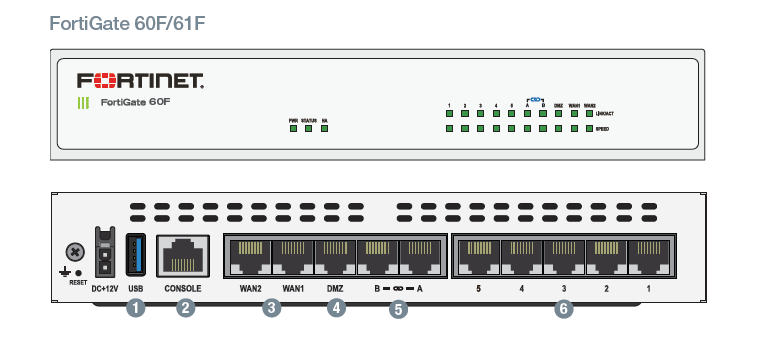The Fortinet Security Fabric is designed to provide centralized management and coordination of multiple FortiGate firewalls and other Fortinet security products. It allows organizations to achieve a unified security strategy, streamline operations, and enhance visibility across their entire security infrastructure. Here’s how the Fortinet Security Fabric works in managing and coordinating multiple FortiGate firewalls:
- Single Pane of Glass Management: The Fortinet Security Fabric offers a centralized management console called FortiManager. It provides a single pane of glass interface for configuring, monitoring, and managing multiple FortiGate firewalls. Administrators can access FortiManager to define security policies, deploy firmware updates, and manage other aspects of the FortiGate firewalls. This simplifies the management process by eliminating the need to individually access and configure each firewall.
- Security Fabric Integration: The Fortinet Security Fabric enables seamless integration and communication between different Fortinet security products, including FortiGate firewalls. This integration allows for coordinated threat intelligence sharing, policy enforcement, and event correlation across the security infrastructure. For example, if a FortiGate firewall detects a threat, it can immediately share that information with other security products within the fabric, such as FortiSandbox or FortiAnalyzer, to provide a coordinated response and enhance the overall security posture.
- Single Sign-On (SSO): The Fortinet Security Fabric supports Single Sign-On (SSO) capabilities, which means users can authenticate once and gain access to multiple Fortinet security products without the need for repeated login credentials. This simplifies user access management and enhances user experience across the security infrastructure.
- Fabric Connectors: Fortinet offers Fabric Connectors, which are purpose-built integration points that enable third-party security products to seamlessly integrate with the Fortinet Security Fabric. This allows organizations to extend the benefits of the fabric to their existing security investments, creating a more comprehensive and coordinated security ecosystem.
- Threat Intelligence Sharing: The Fortinet Security Fabric facilitates real-time threat intelligence sharing among Fortinet security products. When a FortiGate firewall detects a new threat or attack pattern, it can automatically share that information with other Fortinet devices, such as FortiAnalyzer or FortiSandbox. This collaborative approach enables faster detection and response to emerging threats across the network.
- Centralized Reporting and Analytics: The Fortinet Security Fabric provides centralized reporting and analytics capabilities through FortiAnalyzer. It collects and analyzes data from multiple Fortinet devices, including FortiGate firewalls, to generate comprehensive reports and insights. This allows administrators to gain visibility into network traffic, security events, and overall security posture across the entire fabric.
The Fortinet Security Fabric’s capabilities and benefits in managing and coordinating multiple FortiGate firewalls:
- Security Fabric APIs: The Fortinet Security Fabric provides a set of APIs (Application Programming Interfaces) that allow organizations to integrate and automate security operations. These APIs enable seamless communication and coordination between the Security Fabric and other security or IT management systems within an organization’s infrastructure. This integration facilitates streamlined workflows and the exchange of information, enhancing operational efficiency and security effectiveness.
- Fabric-Ready Partner Ecosystem: Fortinet has an extensive ecosystem of Fabric-Ready partners, which includes leading security vendors and technology providers. These partners have integrated their solutions with the Fortinet Security Fabric, allowing for interoperability and coordinated security operations. This ecosystem enables organizations to leverage their existing security investments while benefiting from the unified management, threat intelligence sharing, and coordinated response capabilities offered by the Security Fabric.
- Threat Intelligence Services: The Fortinet Security Fabric leverages FortiGuard, Fortinet’s global threat intelligence platform, to provide up-to-date threat intelligence services. This includes real-time threat feeds, vulnerability research, and security updates. By incorporating FortiGuard services, FortiGate firewalls within the Security Fabric can proactively defend against the latest threats, detect emerging attack patterns, and receive timely security updates to stay protected.
- Secure SD-WAN Integration: Fortinet’s Secure SD-WAN solution seamlessly integrates with the Fortinet Security Fabric. This integration allows organizations to extend the Security Fabric’s centralized management and security capabilities to their SD-WAN deployments. It enables consistent security policies, threat intelligence sharing, and unified visibility across both the WAN and LAN environments, ensuring comprehensive protection and control over network traffic.
- Security Automation and Orchestration: The Fortinet Security Fabric enables security automation and orchestration through its integration with FortiManager and other orchestration platforms. Organizations can define and enforce security policies, automate routine tasks, and orchestrate security workflows across multiple FortiGate firewalls. This automation reduces manual effort, improves operational efficiency, and enhances security consistency throughout the network.
- Advanced Threat Protection: The Security Fabric’s integration with advanced threat protection solutions, such as FortiSandbox, enhances the overall security posture. When a FortiGate firewall detects a suspicious file or behavior, it can automatically send that file to the FortiSandbox for in-depth analysis. The results of the analysis are then shared with the Security Fabric, allowing for coordinated response actions and mitigation against advanced threats.
- Centralized Logging and Analysis: The Fortinet Security Fabric enables centralized logging and analysis of security events through FortiAnalyzer. FortiAnalyzer collects, correlates, and analyzes logs and security events from multiple FortiGate firewalls and other Fortinet devices. This centralizes the management and monitoring of security events, providing administrators with comprehensive visibility, real-time alerts, and actionable insights to proactively detect and respond to security incidents.
By leveraging the Fortinet Security Fabric, organizations can effectively manage and coordinate multiple FortiGate firewalls, ensuring consistent security policies, threat intelligence sharing, and centralized management across their security infrastructure. This approach enhances security effectiveness, simplifies operations, and improves incident response capabilities.
